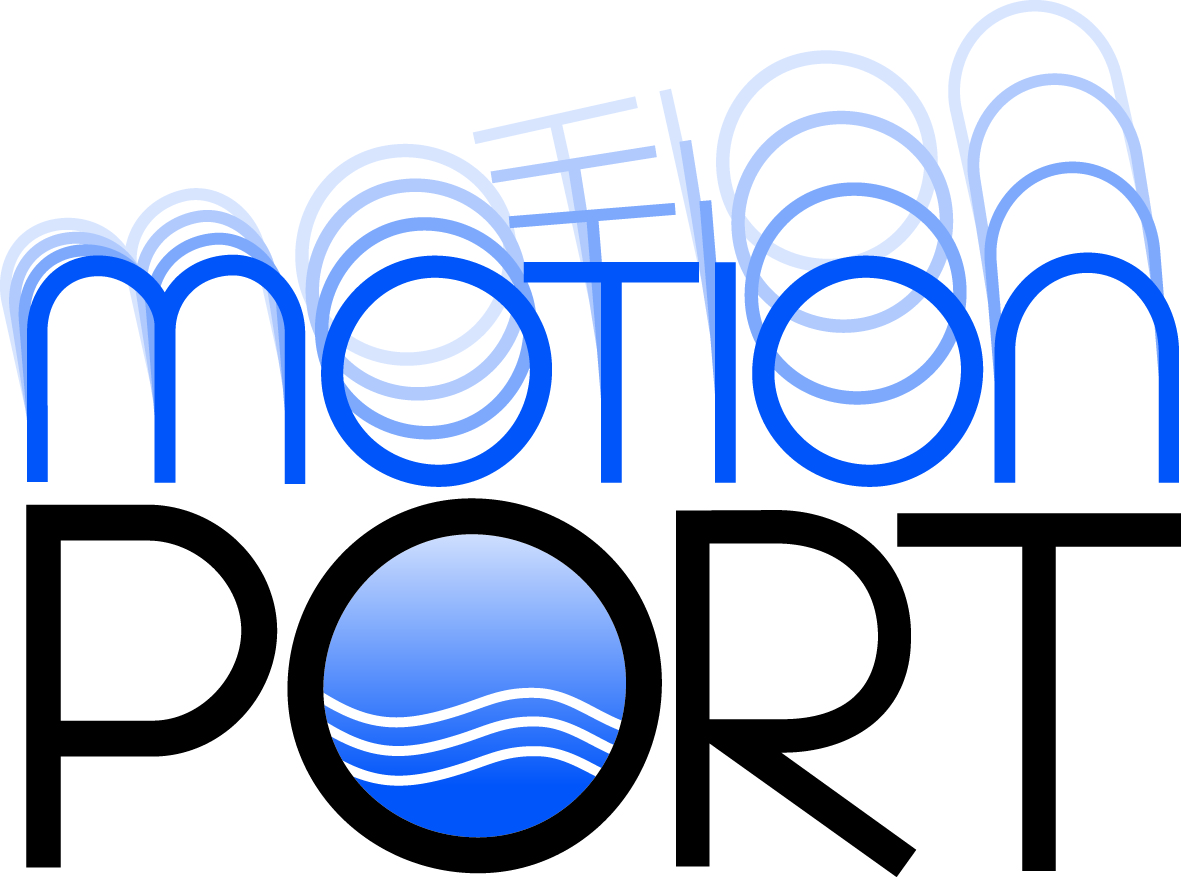
Better Engineering Through
Multibody Dynamic Simulation
June 2018 | Issue #8
In This Issue:
- MotionPort hits the road: NAFEMS/CAASE 18 Conference
- RecurDyn Solver – Becoming an Experienced User
- Contest Ends June 30th – Win Some RecurDyn Swag!
- MBD for ANSYS Free Trial
- What’s G-Modeling?
MotionPort at NAFEMS/CAASE18
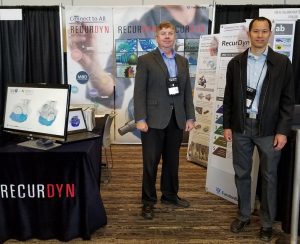
CAASE18, the Conference on Advancing Analysis & Simulation in Engineering, was sponsored by NAFEMS and the Digital Engineering Magazine and had the goal of bringing together leading visionaries, developers, and practitioners of CAE-related technologies in an open forum to share experiences, discuss relevant trends, discover common themes, and explore future issues. (https://www.nafems.org/2018/americas/)
MotionPort’s booth showcased the capabilities of RecurDyn, Particleworks and MBD for ANSYS for mechanical simulation.
MotionPort employees Brant Ross (left) and Nelson Woo (right) attended the conference and staffed the FunctionBay booth.
Joining Brant and Nelson was Sangtae Kim (below) from FunctionBay.
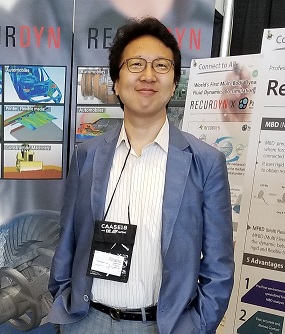 Brant presented “On the Correct Preloading of Nonlinear Flexible Bodies to Achieve Accurate Multibody Simulation Results” and Sangtae presented “Mechanical System Simulation Opportunities Using Combined Multibody Dynamics and Particle‐Based CFD” during the week.
Brant presented “On the Correct Preloading of Nonlinear Flexible Bodies to Achieve Accurate Multibody Simulation Results” and Sangtae presented “Mechanical System Simulation Opportunities Using Combined Multibody Dynamics and Particle‐Based CFD” during the week.
Both presentations were well attended by conference attendees.
We enjoyed presenting to the attendees of the NAFEMS/CAASE18 Conference, learning more about what mechanical engineers are working on today, and we especially enjoyed talking with several of you.
To learn more about the information that we shared at CAASE 2018, please contact us today.
 RecurDyn™Solver
RecurDyn™Solver
Becoming an Experienced User
![]() Most mechanical simulations usually consists of 3 steps:
Most mechanical simulations usually consists of 3 steps:
- Preprocessing – model creation
- Solve – obtaining the solution
- Postprocessing – reviewing the result
The RecurDyn/Solver performs the ‘Solve’ process. While the default solver parameters are appropriate for many situations, parameter adjustment can improve the speed and provide results at a resolution that is best for a given study.
The Dynamic/Kinematic analysis option (Dyn/Kin as shown in the figure) is the probably the most frequently used solver option, so we will focus our comments on the Dyn/Kin parameters.
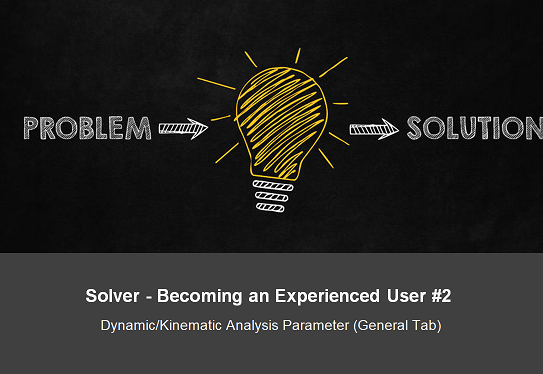
Let’s start with the parameters in the General tab:
- Plot Multiplier Step Factor
- Output File Name
- Static Analysis
- Hide RecurDyn during Simulation
- Display Animation
Click here to learn how to set the parameters in the General tab.
Next let’s review the parameters under the Parameter Tab:
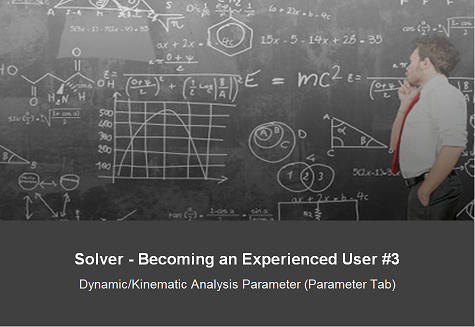
- Maximum Time Step
- Initial Time Step
- Error Tolerance
- Integrator Type
- Numerical Damping
- Match Solving Stepsize with Report Step
- End Time Condition
- Stop Condition
- Etc.
Click here to learn more about these parameters and how to best adjust them for your situation.
Ends June 30th!
Win RecurDyn SWAG
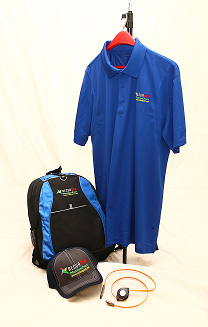 We at MotionPort will soon be launching our new website and we would LOVE to share your experiences with RecurDyn and MotionPort with other talented individuals like yourself.
We at MotionPort will soon be launching our new website and we would LOVE to share your experiences with RecurDyn and MotionPort with other talented individuals like yourself.
AND…for helping us out, we would like to give you a chance to WIN one of our awesome shirts, bags, hats and other fun prizes. To be entered in this month’s contest, simply click here to share how much you like using RecurDyn.
We won’t share names or company information unless you give us permission.
Here is an example of a testimonial:
An automotive engineer shares:
“RecurDyn has played a major role in our company’s simulation capabilities. We have used it for the last nine years and it has allowed us to run simulations that other tools are simply not capable of, whether that be because of RecurDyn’s unique toolkits specialized for our industry or from its robust flexible body modeling capabilities. This has allowed us to expand our simulation capabilities to areas we would otherwise never have thought of applying simulation to before. Because of this and the excellent support from MotionPort, we have seen a marked improvement in the performance of our company’s products.”
That’s it! And then you could be on your way to scoring some awesome RecurDyn SWAG! For more details and to enter for your chance to win, click the button below. Good luck!
RecurDyn News & Tips
User News:
MBD for ANSYS Free Trial
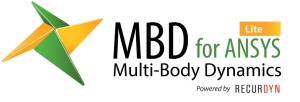 In some of our earlier issues we have provided information about MBD for ANSYS but today we wanted to let you know that there is a version of MBD for ANSYS that is available as a 30-day free trial.
In some of our earlier issues we have provided information about MBD for ANSYS but today we wanted to let you know that there is a version of MBD for ANSYS that is available as a 30-day free trial.
Click the button below for ANSYS software requirements and to download the free trial.
User Tip:
What is G-Modeling?
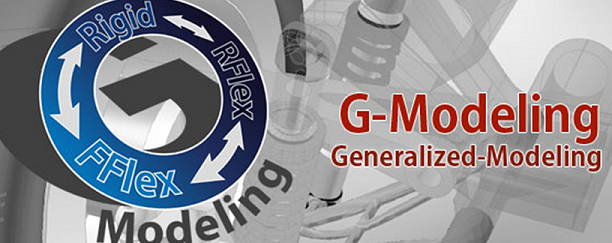 G-Modeling stands for Generalized Modeling. It is a revolutionary technology to increase the efficiency and productivity of working with rigid and flexible bodies in RecurDyn.
G-Modeling stands for Generalized Modeling. It is a revolutionary technology to increase the efficiency and productivity of working with rigid and flexible bodies in RecurDyn.
G-Modeling automates the conversion of bodies from rigid to flexible or from flexible to rigid. Efficiency is increased because the definitions of joints, forces, and contacts are retained during each transition. This allows the analyst to create a model of a system assembly knowing that it is not a problem to convert a body between rigid or flexible states at any time in his analysis process.
Want to learn more about how MotionPort can help you with your projects? Contact us today to schedule a free web meeting to learn how RecurDyn, Particleworks, and MBD for ANSYS are helping our clients and how they can help you.
MotionPort LLC | St. George, UT | www.motionport.com
Click here to unsubscribe
